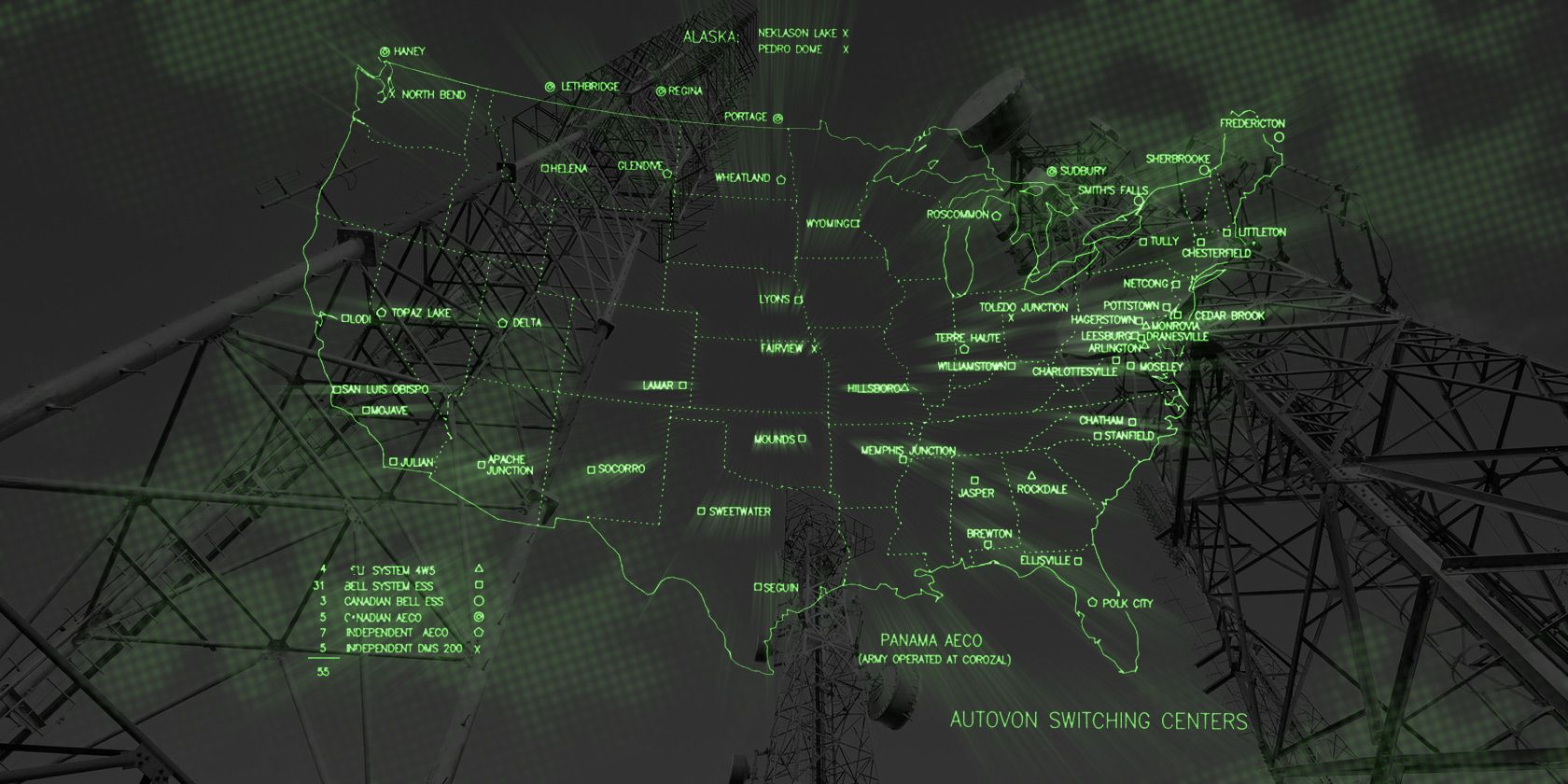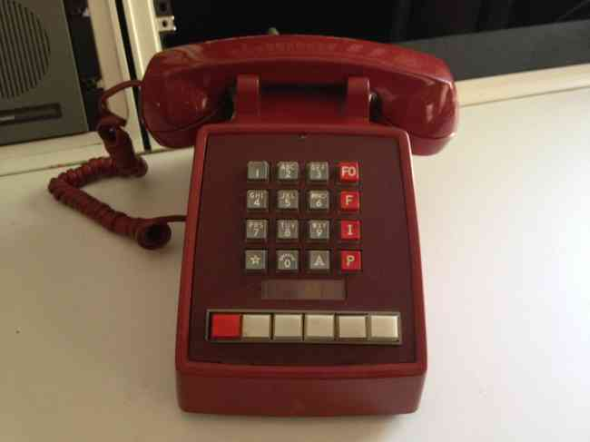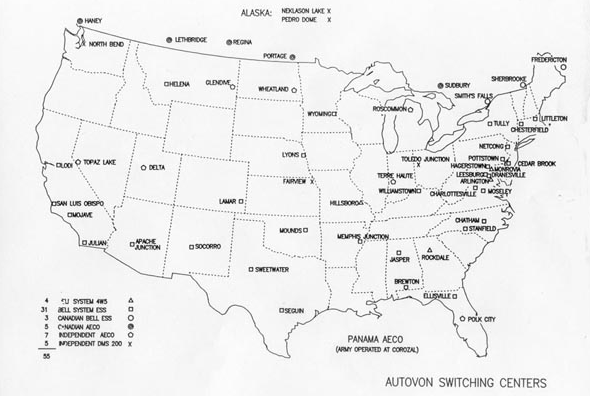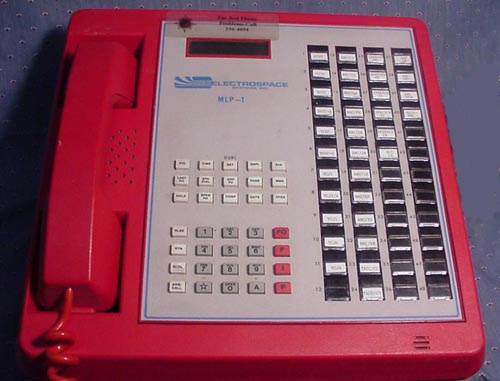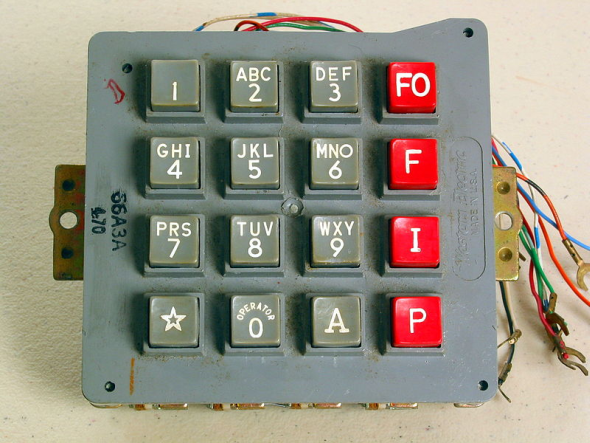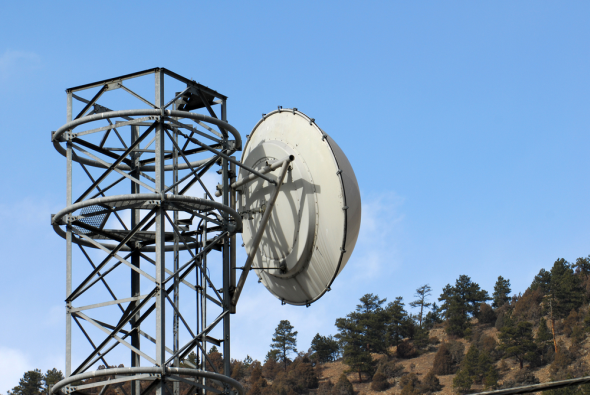During the Cold War, the United States and the Soviet Union dueled not with military muscle but brain power.
Developed in the 1960s, the AUTOmatic Voice Over Network was a product of its time. Because of the constant threat of strategic areas being blown off the map, the U.S. Military sought to decentralize communications networks. Decentralized computer defense networks later evolved into the civilian Internet. While Voice over IP telephony was in its nascent stage, being tested in labs and universities, the military was using a decentralized, though still circuit-switched, phone network called the Autovon.
Designed to withstand a nuclear attack, this cold-war era telephone network was parallel to the civilian network, but made for the exclusive use by the Department of Defense and high-ranking officials. It had the ability to seize trunk lines and break into phone calls in emergencies, and had a hierarchical structure. It also had a button the developers hoped never to need: A button to alert the President and Secretary of Defense of a nuclear attack.
A Decentralized, Hierarchical Phone System
The Autovon had a basis and execution similar to that of the Arpanet, which later became the Internet: decentralize communications so that if one hub was taken out, others would be able to step in and take their place, rather than have centralized hubs of the civilian telephone network at the time.
Like the Internet, the system was robust and redundant. The cables were buried 35 feet underground, and often covered in concrete, in order to endure a nuclear attack, if need be. Alternately, the Autovon used microwave towers to wirelessly connect calls.
To call a military base, the caller would dial 8 or 88 in order to hear a conventional dial tone, then dial a three digit prefix, much like an area code on the civilian phone system. The Autovon was used to connect military bases, government-owned facilities, and also to be a reliable means of making administrative, operational and diplomatic calls. There were also switches that connected to civilian trunk lines.
As a matter of national security, it was supposed to be impossible to connect from the civilian phone lines to the Autovon network. By the time it was eventually replaced, the Autovon had switches all around the world, ranging from the Middle East to Asia, as far north as Alaska, and as far south as Panama.
Although modern telephones connect digitally, the multi-frequency tones we hear were originally designed to direct the call through the maze of telephone switches to reach the called party. Each button, in other words, played two tones at once to reach the other person. The Autovon had a row of four extra red buttons, each made specific tones that regular phones could not, indicating the importance of the call. From the top, they read “FO,” “F” “I” and “P.”
These buttons indicated the level or priority, also called “precedence,” of the call. At that point in history, there may not have been enough circuits for all the calls taking place at the same time. Occasionally, the caller would hear a fast busy signal – this meant all circuits were busy, so call back at another time. While a simple administrative matter or personal call could wait, in a catastrophic emergency, more circuits would indeed be busy, and it was all the more important that military communication remain uninterrupted. Hence the four red buttons.
For When The Call Has To Go Through
The “P” stood for priority, the “I” stood for immediate, the “F” stood for flash, and the “FO” stood for flash override. Calls without precedence were considered “routine” and got no special treatment. These calls were subject to being cut off, and the caller would hear a preempt tone.
High level military brass would use higher priorities to direct troop movements and other urgent communications. The highest level was FO, which was only to be used in order to contact, or by, the President, the Vice President, the Secretary of Defense, or the Deputy Secretary of Defense. In other words, if you had to declare that World War Three was underway, the select few would use FO and preempt any and all phone traffic.
Dial T For Trouble
Imagine the concern, then, when phone phreakers, people who enjoyed exploiting weaknesses in the phone system, usually for no higher purpose than their own curiosity and amusement, were reported to be able to break into the Autovon. In 1975, an informant reported to that it was possible by connecting the directory assistance in Alaska, which had connecting trunks, and then use a technique called guard banding to skip around the different telephone switches to make it look like you already were calling from inside the military network. An FBI team of phone experts were eventually able to prove it was possible.
The Replacement
The Autovon was eventually replaced by the Defense Switched Network, or DSN. In 1982, the DSN was designated the long distance telephone provider for the DoD by the Office of the Secretary of Defense. The DSN provides both secure and non-secure communications, as well as a number of IP-related secret, redundant, and failover networks, including dial-up Internet.
Today, the Autovon telephone system is largely unused, although certain microwave towers have been converted to cellular towers. In many cases, the sites themselves have fallen victim to time and vandalism. The Autovon does have web sites dedicated to it, including ones with pictures of phones. The phones themselves are largely in the realm of collectors and museums. Much like the Arpanet, the Autovon is a part of history, and an important reminder of the innovations that were inspired by the Cold War, and the predecessors to today's technology.
The Internet has largely replaced the phone as the most popular way of communicating, particularly when you factor in VoIP and smartphones/tablets. Our biggest threats today, similarly, are hackers domestically and from China and North Korea, rather than nukes from the Soviet Union. The cold war brought us the space race, the Internet, and – although this is subject to some debate—the Interstate Highway System.
What is your favorite Cold War relic? We'd love to learn from you, so comment below.
Image credits: Telecommunication tower via Shutterstock, Autovon via Shane Young, Autovon Switching Network via Richard Bach, Autovon via Richard Bach, Lexlexlex via Wikipedia, Microwave Tower via Shutterstock

